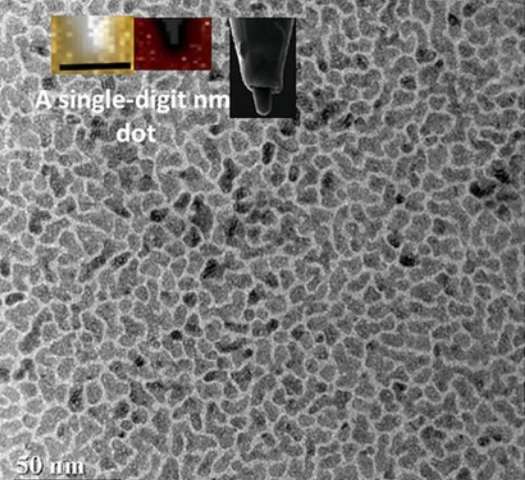转自:https://phys.org/news/2018-08-sub-nm-memory-device-nanofabrication.html

Scientists have developed some of the tiniest magnets to date, just 3-7 nanometers (nm) in size. Due to their small dimensions and high thermal stability, as well as the simple self-assembly process used to make them, the nanomagnets represent an important step toward designing next-generation memory devices with ultra-high densities and low power consumption.
The researchers, Jeongmin Hong and Long You at Huazhong University of Science and Technology, along with K. Dong at the China University of Geosciences and Jeffrey Bokor at the University of California-Berkeley, have published a paper on the new memory cells in a recent issue of Applied Physics Letters.
Previous research has already demonstrated several different varieties of single-digit-nanometer structures. So far, however, all of the techniques used to fabricate these structures involve complex and expensive patterning processes, such as lithography and ion beam etching. In the new study, the nanomagnets are self-assembled, which involves only a simple sputtering process and does not require any nanofabrication patterning processes.
"The most significant part of this research is that we showed sub-5-nm memory cell with good thermal stability," Hong told Phys.org. "The study is a key component for future STT MRAM [spin transfer torque magnetic random access memory] applications. We used a self-assembly method to make 5-nm nanomaget grains for information storage without the necessity of nanofabrication."
The nanomagnets consist of iron-platinum grains with an average diameter of 5 nm. Each nanomagnet has two magnetization directions, which are determined by the nanomagnets' orientations. The two magnetization directions correspond to two states (parallel and anti-parallel) of a magnetic tunnel junction, which forms the basic building block of a nonvolatile memory cell.
Using a state-of-the-art highly focused spin probe, the researchers demonstrated that an applied current switches the magnetization of individual nanomagnets due to spin transfer torque. The ultra-small nanomagnets exhibit a high thermal stability that corresponds to a data retention time of more than 10 years.
"Currently, we are working on how to control device size for an immediate system integration in a reliable way," You said. "In parallel, we will study thermal effects caused by a high-density spin probe."
